What is a Meta Description? 13 Criteria for Writing an Engaging and Effective Meta Description in 2025
- Published on
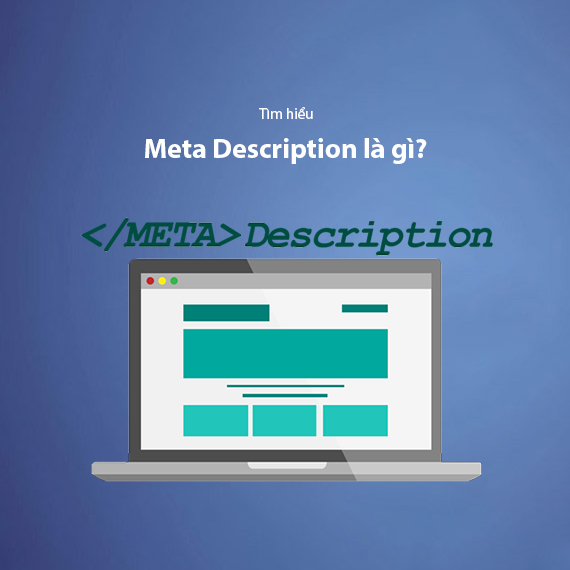
- What is a Meta Description?
- Where and How Does a Meta Description Appear?
- Where Do Meta Descriptions Appear?
- How Does a Meta Description Work?
- Benefits of Optimizing Meta Descriptions
- Increase User Attraction
- Improve Click-Through Rates (CTR)
- Enhance Search Engine Friendliness
- Build a Professional Brand Image
- 13 Criteria for Writing Effective Meta Descriptions
- Criterion 1: Appropriate Length (150-160 Characters)
- Criterion 2: Accurately Summarize Page Content
- Criterion 3: Make It Engaging for Readers
- Criterion 4: Include Primary Keywords
- Criterion 5: Avoid Keyword Stuffing
- Criterion 6: Avoid Duplicate Meta Descriptions Across Pages
- Criterion 7: Avoid Unnecessary Characters
- Criterion 8: Use Call-to-Actions (CTA)
- Criterion 9: Match User Search Intent
- Criterion 10: Use Specific Numbers or Data
- Criterion 11: Leverage Emotions
- Criterion 12: Optimize for Social Media
- Criterion 13: Incorporate Structured Data
- Common Mistakes in Writing Meta Descriptions
- Mistake 1: Using Default Descriptions from CMS
- Mistake 2: Generic and Unappealing Content
- Mistake 3: Keyword Stuffing
- Mistake 4: Duplicate Descriptions Across Pages
- Solutions
- Tools for Optimizing Meta Descriptions
- Google SERP Simulator
- Yoast SEO Plugin
- Rank Math
- Summary
What is a Meta Description?
A Meta Description is a short snippet of text embedded in a webpage's source code, designed to summarize the main content of a page. Although it is not directly visible on the website's interface, this tag is extremely important when your page appears on search engine results pages (SERP). It is the section users see below the title (title tag) and URL, helping them understand what value your content provides.
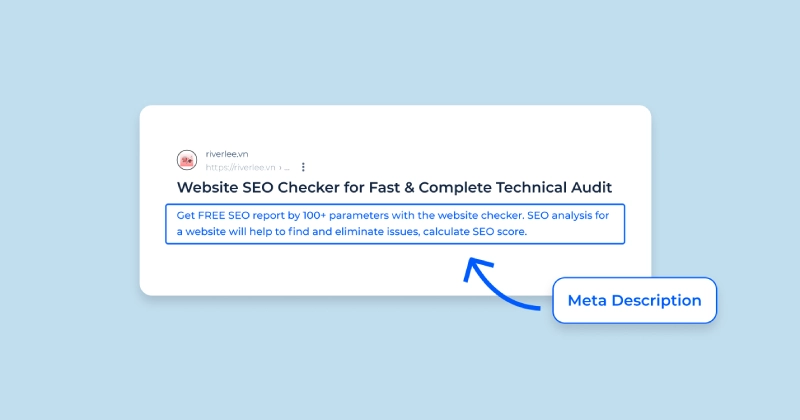
A well-optimized Meta Description not only helps Google understand your content better, but it also has the potential to attract users to click on your page, thereby improving Click-Through Rate (CTR) and indirectly boosting your SEO ranking.
Meta Descriptions are crucial for On-Page SEO and act as a short advertisement to help you make a strong first impression on users. Neglecting to optimize this tag can result in missed opportunities to drive traffic from both search engines and social media platforms.
Where and How Does a Meta Description Appear?
Where Do Meta Descriptions Appear?
Meta Descriptions can show up in various key locations, enhancing SEO effectiveness and user experience:
-
On SERPs (Search Engine Results Pages):
When you search on Google or other search engines, the Meta Description appears just below the page title (title tag) and URL. This snippet provides a summary of the page content and plays a significant role in determining whether users click on your page or not. If the Meta Description is not optimized, Google may automatically generate one from your page's content, but this result is often less engaging.Example:
"Optimize your SEO On-Page strategy with 13 simple steps to boost your website's rankings quickly. Learn more now!"
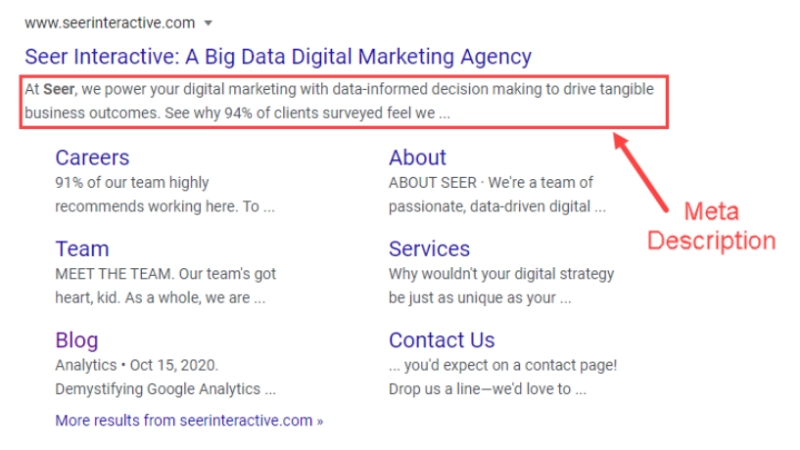
- On Social Media:
When your webpage URL is shared on Facebook, Twitter, or other social media platforms, the Meta Description appears alongside the title and featured image. An engaging description can encourage users to click on the link, driving traffic to your site.
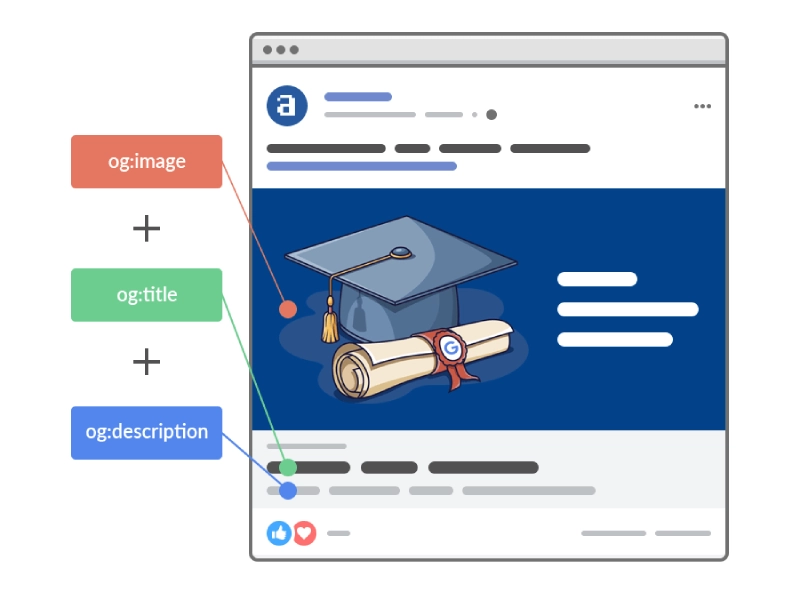
- In the HTML Source Code of the Webpage:
The Meta Description is placed within<meta>tags in the<head>section of the HTML source code. This is where search engines scan and extract the content for display. You can input your Meta Description content via a content management system (CMS) like WordPress, using plugins like Yoast SEO or Rank Math for easy management and review.
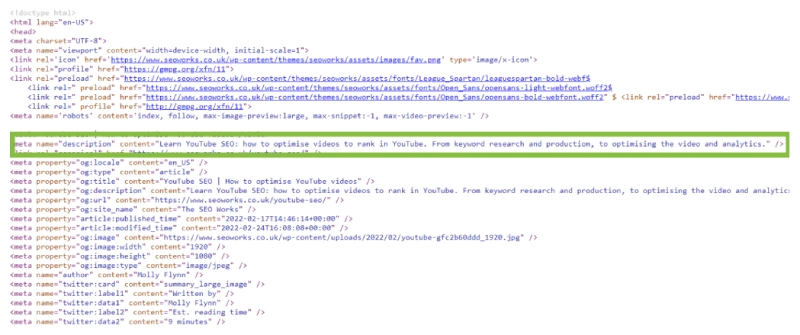
How Does a Meta Description Work?
Meta Descriptions play a critical role in both user engagement and overall SEO performance:
- Summarizing Page Content: This snippet serves as the first message users receive about your content, helping them quickly identify the relevance of your page. Without an accurate or appealing Meta Description, you may lose the opportunity to compete with other results.
- Boosting Click-Through Rates (CTR): A well-written Meta Description provides clear information and includes a call to action, compelling users to click your link.
Pro Tip: Always preview your Meta Description on SERPs using tools like Google SERP Simulator to ensure your content displays correctly and is not truncated.
Benefits of Optimizing Meta Descriptions
Increase User Attraction
Meta Descriptions are one of the first elements users notice when your webpage appears on search engine results pages (SERP). A clear and compelling description immediately grabs attention and encourages users to click the link. This is especially important in highly competitive environments where you must stand out among numerous results.
Improve Click-Through Rates (CTR)
Click-Through Rate (CTR) is a key metric in SEO. While Google does not directly use Meta Descriptions for rankings, an optimized description can increase CTR, which indirectly improves your website ranking. When more users click on your result, Google recognizes your page as valuable and ranks it higher.
Enhance Search Engine Friendliness
Meta Descriptions provide essential information to search engines like Google and Bing, helping them understand the main topic of your page. By naturally incorporating primary keywords into the description, search engines can better identify your content and direct users to your page for relevant searches.
Build a Professional Brand Image
Meta Descriptions are not just a technical SEO element; they are also part of your branding strategy. Using clear, professional language that aligns with your brand tone helps you create a better impression on users. The description acts as a concise invitation, encouraging users to trust and visit your website.
Important Note: To maximize the effectiveness of your Meta Description, ensure it not only attracts users but also aligns with their search intent. Meeting user needs right from the description helps reduce bounce rates and improves user satisfaction.
Next, we will explore 13 effective ways to write Meta Descriptions, ensuring they are optimized for both SEO and user engagement.
13 Criteria for Writing Effective Meta Descriptions
Criterion 1: Appropriate Length (150-160 Characters)
When crafting a Meta Description, ensure that its length falls within the range of 150-160 characters. This is the typical display limit on search engines like Google. If the description is too long, it will be truncated on search engine results pages (SERP), reducing its effectiveness. Conversely, a very short description may fail to provide enough information to convince users to click.
Optimized Example:
"Discover 13 ways to write SEO-friendly Meta Descriptions that boost rankings and drive traffic effectively!" (Approximately 157 characters).
Optimization Tips:
- Write the full content first, then edit it to fit within the character limit.
- Use tools like Google SERP Simulator to preview how your Meta Description will appear on SERPs.
Criterion 2: Accurately Summarize Page Content
A good Meta Description must accurately reflect the content of your webpage. This ensures search engines understand your topic clearly and that user search intent is met. If the description is irrelevant or off-topic, users may immediately bounce from your page, increasing your bounce rate and negatively affecting SEO.
Use the Meta Description to provide a concise, clear overview of your article or product, helping users understand exactly what value they will gain from your page.
Example:
"Learn effective SEO On-Page optimization techniques to boost your Google rankings and attract thousands of daily visitors."
Optimization Tips:
- Review the title tag and main content of the article before writing the Meta Description to ensure that the description aligns with the main information.
- Avoid vague or unrelated details, as this can lead to user disappointment after clicking on the page.
Criterion 3: Make It Engaging for Readers
A Meta Description is not just a summary but also an opportunity to capture user attention and encourage them to click on your website. An engaging Meta Description should stimulate curiosity, evoke emotions, or offer a clear value promise to users.
Use compelling, creative, and persuasive language to make a strong first impression. Additionally, include unique elements such as a call-to-action (CTA) or standout information to make users feel like it’s "unmissable."
Example:
"Discover 10 simple yet effective SEO tips to help your website climb to Google’s Top 1 position today!"
Optimization Tips:
- Use action-oriented phrases like: "Discover now," "Don’t miss out," or "Learn more."
- Emphasize clear benefits, such as: "Reduce SEO costs by 50% with these simple techniques."
Criterion 4: Include Primary Keywords
An optimized Meta Description must include primary keywords, as they help search engines and users quickly identify the topic of your webpage. When the primary keyword appears in the Meta Description and matches the user’s search query, Google highlights it in bold, increasing visibility and drawing attention. This not only improves CTR (Click Through Rate) but also enhances relevance in Google’s eyes.
Insert the primary keyword naturally and ensure it appears at the beginning of the description, where both search engines and users are most likely to notice it.
Good Example:
"What is SEO On-Page? Learn how to optimize your website with simple steps to achieve high Google rankings."
Optimization Tips:
- Place the primary keyword within the first 1-2 sentences of the Meta Description.
- Avoid using the keyword awkwardly or repeating it excessively (avoid keyword stuffing).
- Combine the primary keyword with related keywords or Latent Semantic Indexing (LSI) terms for natural and diverse phrasing.
Read more about Keyword Research Guide for Articles
Criterion 5: Avoid Keyword Stuffing
While including primary keywords in your Meta Description is essential, keyword stuffing can have adverse effects. Not only does it harm user experience, but it also leads Google to view your page negatively. A keyword-stuffed Meta Description feels unnatural, annoys users, and erodes their trust.
Use the primary keyword sparingly and naturally, limiting its appearance to 1-2 times within the description. This is sufficient for search engines to recognize the topic without compromising content quality.
Bad Example:
"SEO On-Page is effective SEO. Learn SEO On-Page to optimize SEO On-Page for your website today."
Good Example:
"Explore SEO On-Page and effective optimization techniques to help your website rank higher on Google quickly."
Optimization Tips:
- Use the primary keyword at the beginning, then incorporate synonyms or related terms to maintain a natural tone.
- Focus on creating engaging and informative content rather than forcing in keywords.
Criterion 6: Avoid Duplicate Meta Descriptions Across Pages
Each page on your website should have a unique Meta Description. When Google detects duplicate descriptions across pages, it may lower your site’s ranking due to a lack of originality and relevance. Users may also become confused when encountering multiple pages with identical descriptions.
Instead, ensure that the Meta Description for each page is distinct and accurately reflects the specific content of that page. This not only improves SEO rankings but also enhances user experience.
Bad Example (Duplicate):
"Learn SEO effectively with the best On-Page and Off-Page optimization techniques available today." (Used for multiple pages.)
Good Examples:
- Page 1: "Discover On-Page SEO: Key techniques to quickly improve your rankings."
- Page 2: "What is Off-Page SEO? Learn how to build quality backlinks to boost your Google rankings."
Optimization Tips:
- Plan and write individual Meta Descriptions for each page, ensuring they match the content of each article or product.
- Use SEO tools like Yoast SEO or Rank Math to detect duplicate descriptions and make adjustments.
Criterion 7: Avoid Unnecessary Characters
Using special or unnecessary characters in your Meta Description can cause the content to be truncated or displayed incorrectly on search engine results pages (SERPs). For example, Google may truncate a description that contains quotation marks (“ ”), apostrophes ('), or improperly encoded characters. This can result in display errors that confuse users or obscure your intended message.
Bad Example:
<meta name="description" content="Learn SEO "effectively" for beginners.">
Google will truncate the content after the second quotation mark, leaving the description incomplete.
Good Example:
<meta name="description" content="Learn SEO effectively for beginners.">
Optimization Tips:
- Avoid using special characters like quotation marks, apostrophes, and non-alphanumeric symbols. If necessary, replace them with HTML entities:
- Quotation marks:
" - Ampersand:
&
- Quotation marks:
- Keep your Meta Description simple, readable, and focused on the core message to avoid confusing users.
Criterion 8: Use Call-to-Actions (CTA)
A Call-to-Action (CTA) is a powerful element that makes Meta Descriptions more engaging and encourages users to take immediate action. A well-crafted CTA can significantly increase Click-Through Rate (CTR) by urging users to explore your content.
CTAs typically appear at the end of the Meta Description, serving as a concise, clear invitation. Use action-oriented phrases like "Discover now," "Learn more," or "Grab today’s deal."
Example:
"Learn how to write SEO-friendly Meta Descriptions to boost your Google rankings. Explore these effective tips now!"
Optimization Tips:
- Position the CTA at the end of the Meta Description to reinforce your message.
- Use urgency-inducing phrases like: "Don’t miss out," "Act now," or "Limited time only."
- Ensure the CTA aligns with the article’s content and the user’s intent.
Note: A strong CTA not only boosts CTR but also differentiates your content from competitors on SERPs.
Criterion 9: Match User Search Intent
Meta Descriptions must precisely address the search intent of users to attract them to click on your webpage. Users typically search with a specific purpose, such as seeking answers, purchasing products, or gaining knowledge. If your Meta Description fails to align with this intent, they are likely to skip your result in favor of another.
Good Examples:
- For informational intent: "Learn how to optimize SEO On-Page with detailed guidance to boost your website rankings quickly."
- For transactional intent: "Buy affordable, authentic laptops with a 2-year warranty. Exclusive discounts available today, check it out now!"
Bad Example:
"Best SEO On-Page services at discounted prices." (Unclear whether it’s for learning or purchasing.)
Optimization Tips:
- Identify the primary user intent: If they are looking for answers, provide specific information. If they want to purchase a product, emphasize benefits and offers.
- Use intent-descriptive keywords: Examples include "Guide," "Buy now," "Discover," or "How to."
- Pair intent with an appropriate CTA: For purchase intent, use phrases like "Buy today to enjoy discounts."
Meeting the user’s search intent not only increases click-through rates but also keeps users engaged longer, reducing bounce rates.
Criterion 10: Use Specific Numbers or Data
Including specific numbers or data in your Meta Description not only builds credibility but also grabs user attention. Numbers often convey reliability and make your content stand out from competitors on search engine results pages (SERP).
Details such as quantities, percentages, or clear benefits can significantly boost click-through rates (CTR) by providing concrete and persuasive value to users.
Examples:
- "Boost your SEO ranking to Google’s Top 3 in just 30 days with 13 simple optimization techniques."
- "Over 10,000 customers have used our services and achieved outstanding results."
Optimization Tips:
- Provide specific numbers: Figures like "10 steps," "90% effectiveness," or "Over 5,000 customers" enhance trustworthiness.
- Combine numbers with benefits: Tie data to user benefits, such as "Reduce advertising costs by 50% in just one month."
- Avoid vague or meaningless data: Avoid using generic numbers that don’t align with the content or user intent.
Note: When using numbers, ensure their accuracy and relevance to the article’s content to avoid misleading users or losing trust.
Criterion 11: Leverage Emotions
An effective Meta Description not only provides information but also evokes emotions in users, making them curious, excited, or even compelled to act. Strong emotions help your content stand out among competitors on SERPs, particularly in competitive markets.
Use words or phrases that create a sense of urgency (FOMO – Fear of Missing Out), intrigue, or excitement to emotionally connect with your readers.
Examples:
- "Don’t miss these 10 SEO secrets to get your website to Google’s Top 1 in no time!"
- "Do you know why your website isn’t ranking? Discover these surprising reasons now!"
- "Get 50% off today only. Act fast before the offer ends!"
Optimization Tips:
- Use strong, action-oriented language: Examples include "Discover," "Don’t miss out," "Right now," "Secrets," or "Surprising."
- Create urgency: Convey a sense of immediacy, such as "Offer ends tomorrow" or "Only 2 spots left."
- Focus on benefits: Highlight what the user will gain, such as "Boost your SEO rankings in just 7 days!"
Note: While leveraging emotions is effective, ensure that your claims are accurate and not misleading, as this could harm user trust once they visit your page.
Criterion 12: Optimize for Social Media
Meta Descriptions aren’t just critical on SERPs; they also significantly influence how your content appears on social media platforms like Facebook, Twitter, or LinkedIn. When a URL is shared, the Meta Description is displayed as a short snippet below the title and image, helping users quickly grasp the main content of the article or product.
Optimizing Meta Descriptions for social media requires content that is engaging, well-aligned with visuals, and clearly conveys your intended message.
Example:
"Learn how to optimize SEO in 13 simple steps! Over 90% of SEOs improved rankings within just one month. Find out how!"
Optimization Tips:
- Be concise and engaging: Keep descriptions brief, captivating, and suitable for the tone and style of the social platform.
- Focus on benefits: Highlight what users gain by clicking the link, e.g., "Discover how to boost website traffic effectively and efficiently."
- Align with visuals: Ensure the Meta Description complements the shared image to maximize user attention.
Note: Use tools like Facebook Sharing Debugger or Twitter Card Validator to preview and refine how your Meta Description appears on social media.
Criterion 13: Incorporate Structured Data
Using structured data within your Meta Descriptions is an effective way to highlight your content on SERPs. Structured data enables Google to display additional information such as star ratings, prices, or stock availability, which can significantly boost click-through rates (CTR).
Structured data is implemented through schema markup, providing search engines with supplementary details about your webpage. When used correctly, it enriches Meta Descriptions and makes them more visually appealing.
Example of enhanced display with structured data:
⭐⭐⭐⭐⭐ (4.8/5)
"Effective SEO tips: Only $199/month – Sign up now to boost your Google rankings fast!"
Optimization Tips:
- Use relevant schema types: Select schemas that match your content, such as:
- Review Schema: Displays star ratings.
- Product Schema: Displays product pricing.
- Event Schema: Displays event details.
- Combine schema with Meta Descriptions: Ensure that the Meta Description adds value to the information displayed through schema.
- Test schema implementation: Use tools like Google Rich Results Test to verify proper deployment of structured data.
Note: Structured data doesn’t replace Meta Descriptions but acts as a complementary tool to enhance visibility and value on SERPs.
Common Mistakes in Writing Meta Descriptions
Poorly written Meta Descriptions can significantly reduce SEO effectiveness and click-through rates (CTR). Below are common mistakes to avoid:
Mistake 1: Using Default Descriptions from CMS
Many web admins rely on default descriptions generated by CMS without optimizing them. These descriptions are often generic, lack appeal, and are not specific to the page’s content. As a result, users are not engaged, and Google may rank the page lower.
Mistake 2: Generic and Unappealing Content
Meta Descriptions that are too vague or fail to highlight specific benefits cannot compete effectively on SERPs. Descriptions like “This page contains useful information” are unhelpful and lead users to skip over your result.
Mistake 3: Keyword Stuffing
Repeating or overusing keywords in Meta Descriptions makes the content sound unnatural and may result in penalties from Google. Users also tend to lose trust when they encounter descriptions that lack coherence or feel forced.
Mistake 4: Duplicate Descriptions Across Pages
Each page on a website must have a unique Meta Description. Using identical descriptions for multiple pages signals a lack of originality to Google and may lower the ranking of the entire site.
Solutions
- Write Manually: Ensure that every page has a unique, engaging, and directly relevant Meta Description.
- Avoid Vagueness: Clearly describe the content and emphasize the benefits users will receive.
- Optimize Keywords: Use primary keywords naturally and avoid overstuffing.
- Check for Duplicates: Utilize tools like Yoast SEO or Screaming Frog to detect and fix duplicate content issues.
Tools for Optimizing Meta Descriptions
To effectively optimize your Meta Descriptions, leverage the following tools to review, edit, and ensure compliance with SEO best practices:
Google SERP Simulator
This tool allows you to preview how your Meta Description will appear on search engine results pages (SERPs). It helps check the length, content, and keyword display to ensure your description is not truncated and remains engaging to users.
Yoast SEO Plugin
A popular plugin for WordPress that helps you write and review Meta Descriptions directly within the admin interface. Yoast SEO provides visual feedback and optimization suggestions for keyword usage, length, and content appeal.
Rank Math
Another powerful tool for WordPress, Rank Math analyzes your Meta Descriptions, assigns SEO scores to individual pages, and detects duplicate content. It also allows for bulk editing of Meta Descriptions, saving you significant time and effort.
Tip: These tools not only help you optimize Meta Descriptions but also enhance your overall On-Page SEO strategy.
Summary
Meta Descriptions are not just a technical aspect of SEO; they are your first opportunity to attract users when they search on Google or other search engines. A well-crafted Meta Description can significantly improve Click-Through Rates (CTR), contribute to higher website rankings, and drive quality traffic.
Final Tip:
Always prioritize the user experience when writing Meta Descriptions. A great description not only enhances SEO but also determines whether users choose your page over others.
Start optimizing your Meta Descriptions today to boost SEO performance and attract more visitors!
Latest Posts

Lesson 26. How to Use break, continue, and return in Java | Learn Java Basics
A guide on how to use break, continue, and return statements in Java to control loops and program execution flow effectively.

Lesson 25. The do-while Loop in Java | Learn Basic Java
A detailed guide on the do-while loop in Java, including syntax, usage, examples, and comparison with the while loop.

Lesson 24. How to Convert Decimal to Binary in Java | Learn Basic Java
A guide on how to convert numbers from the decimal system to the binary system in Java using different methods, with illustrative examples.

Lesson 23. How to Use the While Loop in Java | Learn Java Basics
Learn how to use the while loop in Java with syntax, real-world examples, and practical applications in Java programming.
Related Posts

What is Domain Authority? 13-Step Guide to Improve DA Score for Your Website in 2025
Discover what Domain Authority is and its importance in SEO. A detailed guide on the 13-step process to effectively increase DA, from content research and technical optimization to building quality backlinks for a sustainable SEO strategy.
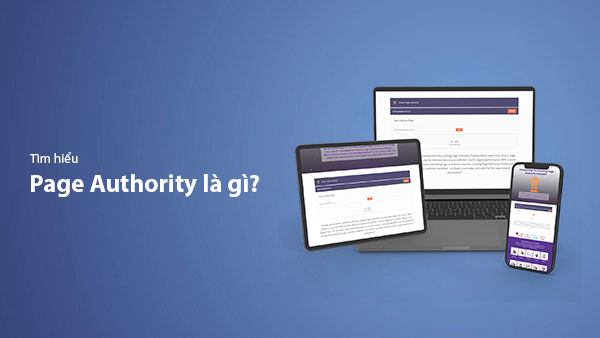
What is Page Authority? The Importance of Page Authority for SEO in 2025
Learn what Page Authority (PA) is and its role in SEO optimization to help improve your website's ranking on search engines in 2025.
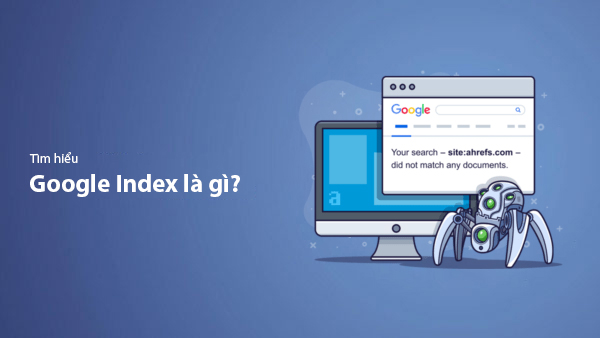
What is Google Index? A Guide to 13 Ways to Speed Up Website Indexing in 2025
Discover what Google Index is and learn detailed guidelines on 13 effective ways to get your website indexed quickly and boost your SEO rankings on Google in 2025.
![What is Onpage SEO? 23+ Basic & Advanced Onpage Optimization Checklist [2025]](/blog-posts/seo-onpage/seo-onpage-thumb.jpg)
What is Onpage SEO? 23+ Basic & Advanced Onpage Optimization Checklist [2025]
Learn the concept of Onpage SEO and the 23+ basic to advanced Onpage optimization checklist to improve website quality and boost search rankings effectively.

